Ancient Greek LIFE
1/43
Earn XP
Description and Tags
Education, belief system, social structure etc.
Name | Mastery | Learn | Test | Matching | Spaced |
|---|
No study sessions yet.
44 Terms
What is the earliest form of government in Greece? And what City- states had this gov.?
The earliest form of government in ancient Greece was a monarchy, where a king ruled with absolute power, often believed to be chosen by the gods. This form was most common during the Mycenaean period (around 1600–1100 BCE).
Whats an Oligarchy and what city - states had this gov.?
An oligarchy is a form of government where a small group of powerful people (usually wealthy landowners, aristocrats, or military leaders) hold all the power.Sparta is the most famous example. (Citizens had little say in government.)
Whats a Tyranny ?
A tyranny in ancient Greece was when one person took control of a city-state by force or without legal right. This leader, called a tyrant, usually gained power by overthrowing the existing government—often the oligarchy—and ruled without the approval of the people or established laws. Although today "tyrant" has a negative meaning, some Greek tyrants were popular and helped improve their cities.
Whats a direct democracy? What makes it different from a repersentitive democracy and what city - states had this gov.?
Direct democracy: Citizens vote on every important issue themselves.
Representative democracy: Citizens elect leaders or representatives who make decisions on their behalf.
Athens is the most famous example of direct democracy, especially during the Classical Period (5th century BCE).Citizens of Athens (free adult males) could attend the Assembly (Ekklesia) to vote on laws, war, and public policy.
What was Spartas gov made up of who was most important to least?
A group of kings (aristocrats),
The Ephors (5 officials who had major political power)
council of elders,
Assembly of citizens
: What type of religion did the ancient Greeks practice?
Polytheism — belief in many gods and goddesses.
What was the role of oracles in Greek religion?
Oracles were priests or priestesses believed to communicate directly with the gods. They provided divine guidance and predictions about the future. People from all over Greece consulted oracles—especially the famous Oracle of Delphi—before making important decisions like going to war or founding colonies. Their messages were often cryptic but held great religious and political significance.
What did Greeks believe about the afterlife?
Greeks believed that after death, souls traveled to the underworld ruled by Hades, a shadowy and gloomy place where the dead lived a dull existence. The afterlife was not seen as a reward or punishment but rather a continuation in a lesser form. Because of this, living honorably and gaining glory during life was considered more important than the afterlife.
Why were festivals important in Greek religion?
Festivals were key religious events that honored the gods and strengthened community bonds. They included sacrifices, prayers, feasts, athletic competitions, and theatrical performances. Theatre began as part of religious festivals, especially those dedicated to Dionysus, the god of wine and drama. These festivals celebrated both devotion to the gods and cultural achievements, reinforcing shared identity and values.
Who were the citizens in Athens?
To be a Citizen of Athens you needed to have political rights which were only given to a man born in athens.
Who were the metics in Athens?
Foreigners living in Athens; they were free but had no political rights and often worked as merchants or artisans.
What was the status of slaves in Athens?
Slaves were owned by citizens, worked in homes, mines, or public projects, and had no rights.
Who were the Spartiates in Sparta?
Spartiates was a name given to only elite warrior class and full citizens with political rights and military training. (men)
What were the perioikoi in Sparta?
Foreigners who had no political rights, but could engage in industry and trade.
Who were the helots in Sparta?
State-owned slaves who farmed land for Spartans and were harshly controlled
How were women's roles different in Sparta compared to Athens?
Spartan women had more freedom, could own property, and were expected to be healthy to bear strong children, unlike Athenian women who were mostly confined to home life.
Athenian Social pyramid
Citizens, upper class, middle class, merchants, artisians, crafts poeple, farmers'
Wives and children of citenzens
Metics
slaves
Spartan Social pyramid
Spartiates
Wives and children
PERIKOI
HELOTS
What was Athens social pyramid of gov. leaders?
10 generals (elected military leaders of Athens)
Less magistrates (minor officials who handled daily tasks and local issues)
Council of 500 (citizens chosen by lot to propose laws and run daily government)
Assembly (main democratic body where citizens voted on laws and policies)
What is a symposium?
a drinking party or social gathering for elite men. It usually took place in the evening after a meal and involved:
Wine drinking
Entertainment (like music, poetry, or performances)
Discussion on topics like politics, philosophy, or love
Sometimes games or competitions
Women typically did not attend, except for entertainers like dancers or musicians. It was both a social and intellectual event for bonding among the upper class.
What were the three main styles of ancient Greek pottery?
Geometric, Black-Figure, and Red-Figure.
What characterizes Geometric pottery?
Repeating patterns and stick-like human/animal figures.
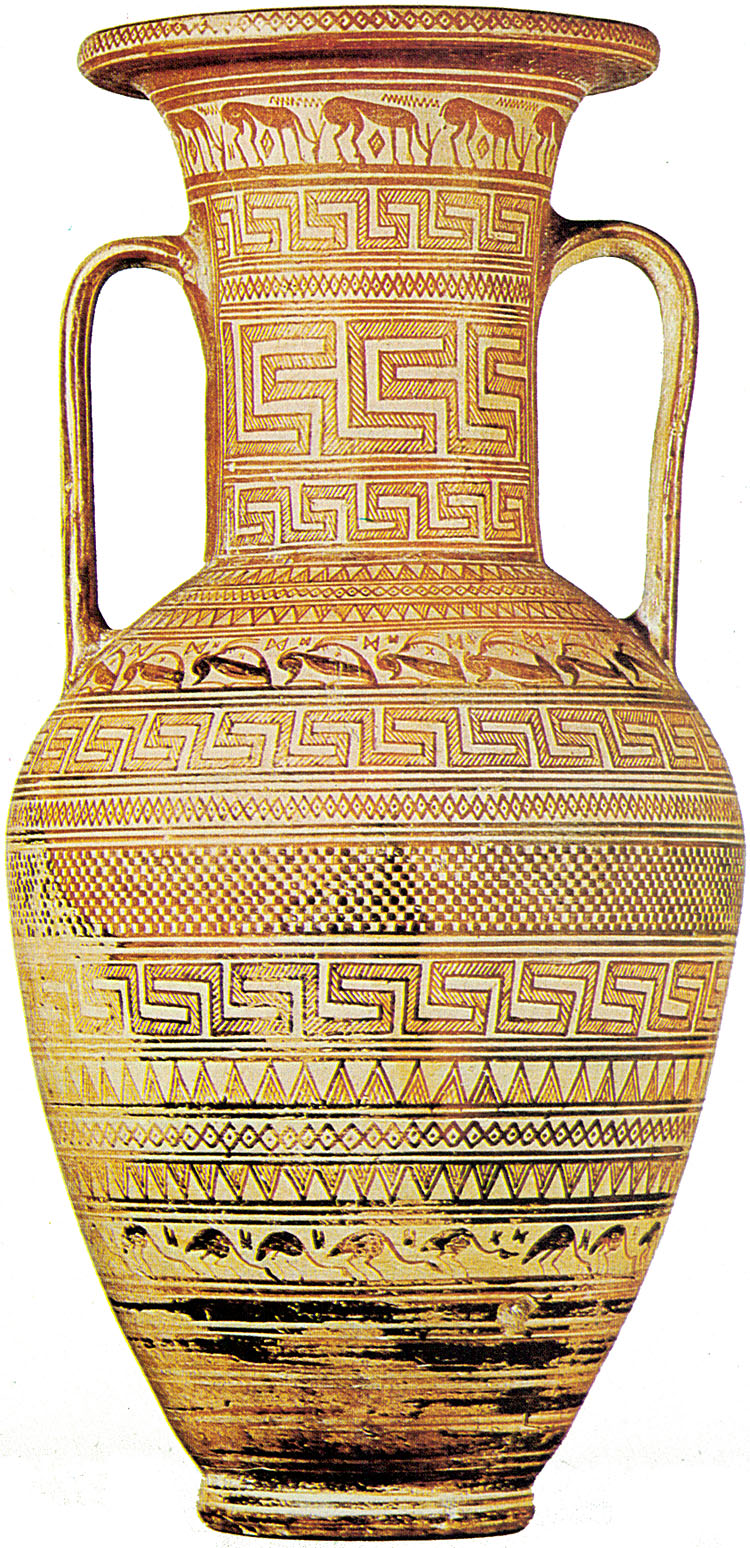
What’s the difference between Black-Figure and Red-Figure pottery?
Black-Figure has black images on red clay; Red-Figure is red images on a black background, allowing more detail.
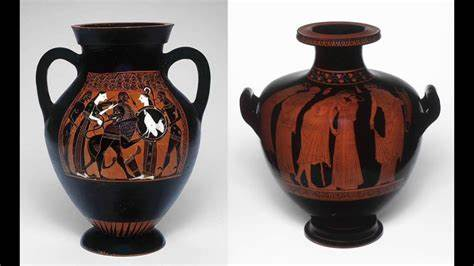
How did Hellenistic sculpture differ from Classical?
Hellenistic age was emotional, and realistic where as Classical was more idealistic.
What are the three types of Greek columns (orders)?
Doric, Ionic, and Corinthian.
Characteristics of Doric
Plain top (capital)
Thick and sturdy
Used in the Parthenon
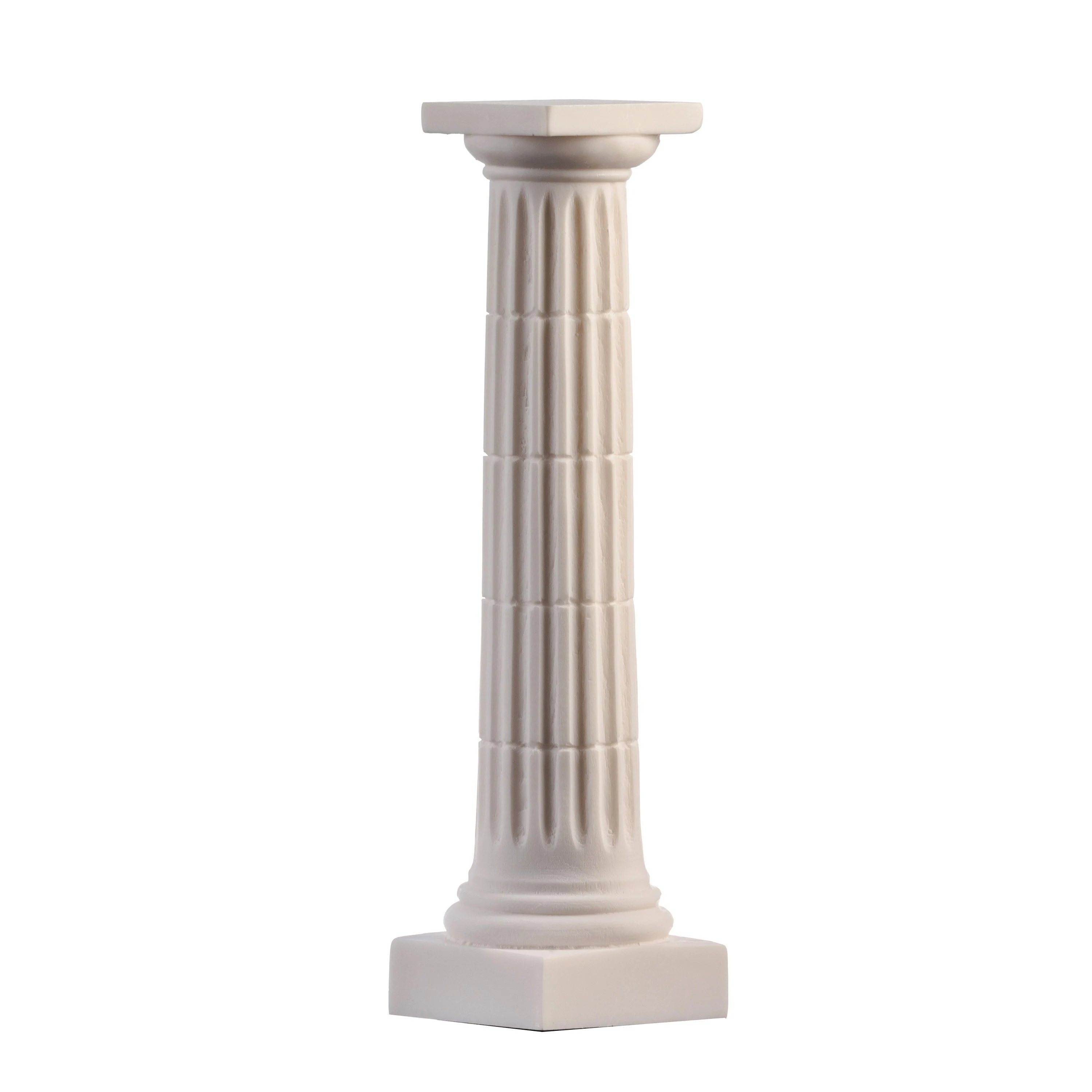
Characteristics of ionic
curled out on either sides like ram’s horns
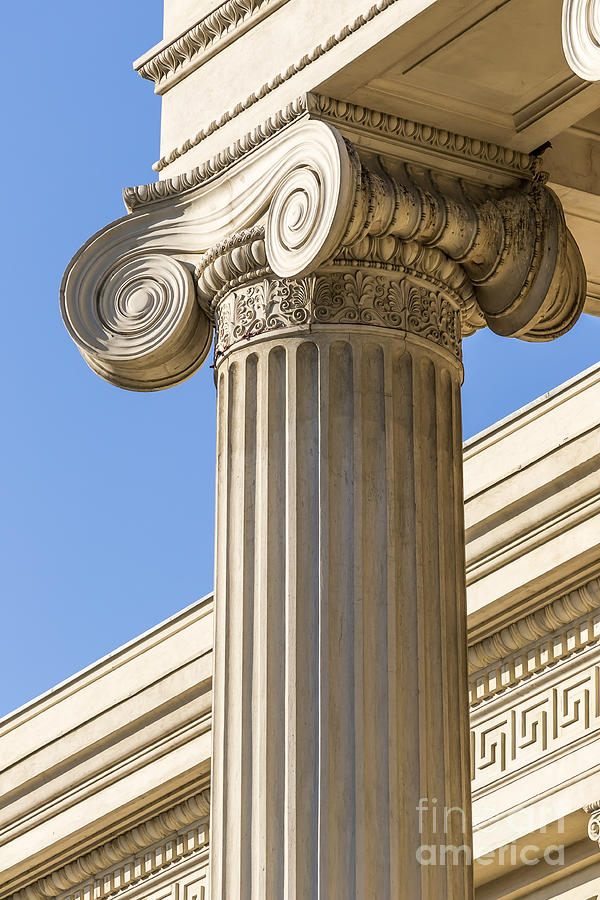
Characteristics of Corinthian
more extreme and detailed.
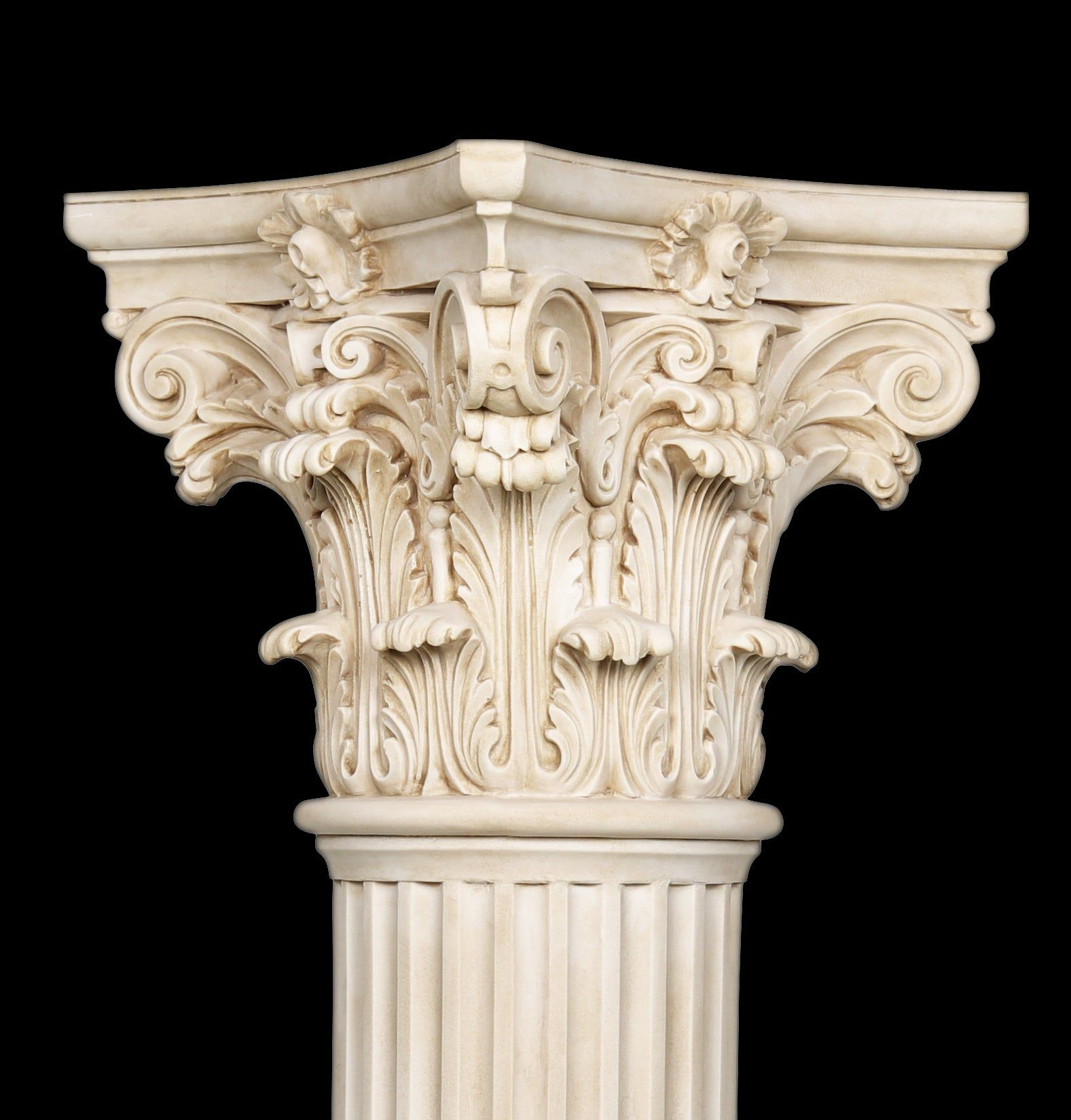
Which Greek building is dedicated to Athena and features Doric columns?
The Parthenon in Athens.
What was the central room of a Greek temple called?
Naos
What direction did Greek temples usually face?
East, toward the rising sun.
Whats a Frieze?
The frieze is the decorative band running around the building just below the roofline.
Who was homer?
What is the Iliad about?
The Iliad, written by Homer, is an epic poem that takes place during the final weeks of the Trojan War. It focuses on the anger of Achilles, the greatest Greek warrior, who withdraws from battle after a dispute with Agamemnon, the Greek leader. This decision weakens the Greek army and allows the Trojans, led by Hector, to gain the advantage. When Achilles' close friend Patroclus is killed by Hector while fighting in Achilles’ armor, Achilles is overcome with rage and returns to the battlefield. He kills Hector in revenge and dishonors his body by dragging it behind his chariot. The poem ends not with the fall of Troy, but with a powerful moment of humanity. The story explores themes of pride, rage, honor, fate, and compassion in war.
What is the Odyssey about?
The Odyssey, also written by Homer, tells the story of the Greek hero Odysseus and his long journey home after the Trojan War. The poem follows his 10-year struggle to return to his kingdom of Ithaca, where his wife Penelope and son Telemachus wait for him. Along the way, Odysseus faces many challenges, including the Cyclops Polyphemus, the sorceress Circe, the deadly Sirens, and the sea god Poseidon, who is angry with him. He also visits the underworld and loses all his men. Back in Ithaca, Penelope is surrounded by suitors trying to take Odysseus’s place. When Odysseus finally returns in disguise, he proves his identity and defeats the suitors. The poem is about cleverness, perseverance, loyalty, and homecoming, showing how Odysseus uses his intelligence and courage to survive and reclaim his life.
What is the trojan horse myth?
The Trojan Horse is a famous story from Greek mythology about how the Greeks finally defeated the city of Troy after a long war. According to the myth, the Greeks built a large wooden horse and hid a group of soldiers inside it. Then, they pretended to sail away, leaving the horse at the gates of Troy as a “gift.” The Trojans brought the horse into the city, thinking the war was over. That night, while the Trojans slept, the Greek soldiers climbed out of the horse, opened the city gates, and let in the rest of the Greek army, who had secretly returned. The Greeks destroyed Troy, ending the war.
What is the judgement of paris?
The Judgement of Paris is a Greek myth that explains how the Trojan War started. At a wedding, the goddess Eris threw a golden apple labeled “To the fairest,” causing a fight between three goddesses—Hera, Athena, and Aphrodite. They asked Paris, a prince of Troy, to choose the winner. Each offered him a reward: Hera promised power, Athena offered wisdom and victory, and Aphrodite promised him the most beautiful woman in the world. Paris chose Aphrodite, and she gave him Helen, even though she was already married to a Greek king. When Paris took Helen to Troy, the Greeks became furious and started the Trojan War.
Who is Achilles and why is he significant?
Achilles is a Greek hero in The Iliad by Homer.
He was the strongest warrior in the Trojan War.
Known for being nearly invincible—his only weakness was his heel (“Achilles’ heel”).
Son of the sea goddess Thetis and a mortal man.
What is Muses
The Muses were nine Greek goddesses who inspired art, music, poetry, and history. They were daughters of Zeus and Mnemosyne. Ancient poets asked the Muses for help to create their works.
wHAT IS fATES
The Fates (also called the Moirai) were three goddesses who controlled every person’s life and destiny.
One spun the thread of life.
One measured its length.
One cut the thread, deciding when a person would die.
They showed that even gods couldn’t change what was destined to happen.
What is Erinyes/furies?
The Erinyes, also called the Furies, are Greek goddesses of vengeance and punishment.
They punish people who commit serious crimes, especially crimes against family like murder or betrayal.
They are relentless and terrifying, driving wrongdoers to guilt and madness.
Often shown as three women with snakes for hair.
Who wrote Elements and is called the “Father of Geometry”?
Euclid.
How did the Greeks measure time
With sundials and water clocks
What are sundials and water clocks?
Sundials: Devices that tell time by using the position of the sun’s shadow on a marked surface.
Water Clocks (Clepsydra): Devices that measure time by the steady flow of water from one container to another.